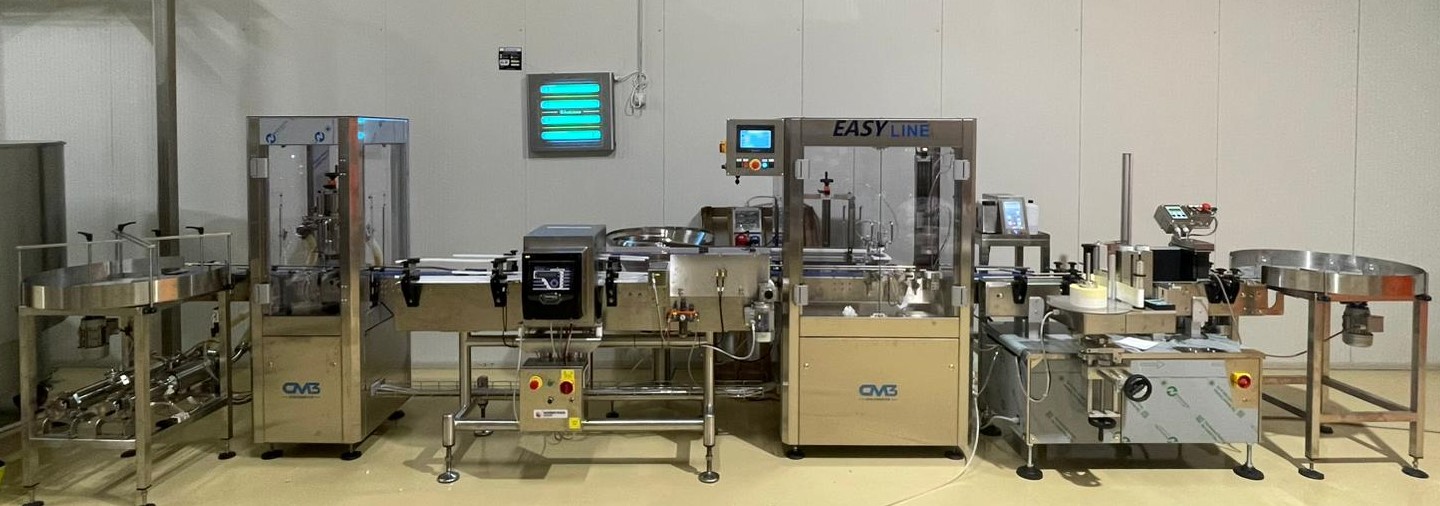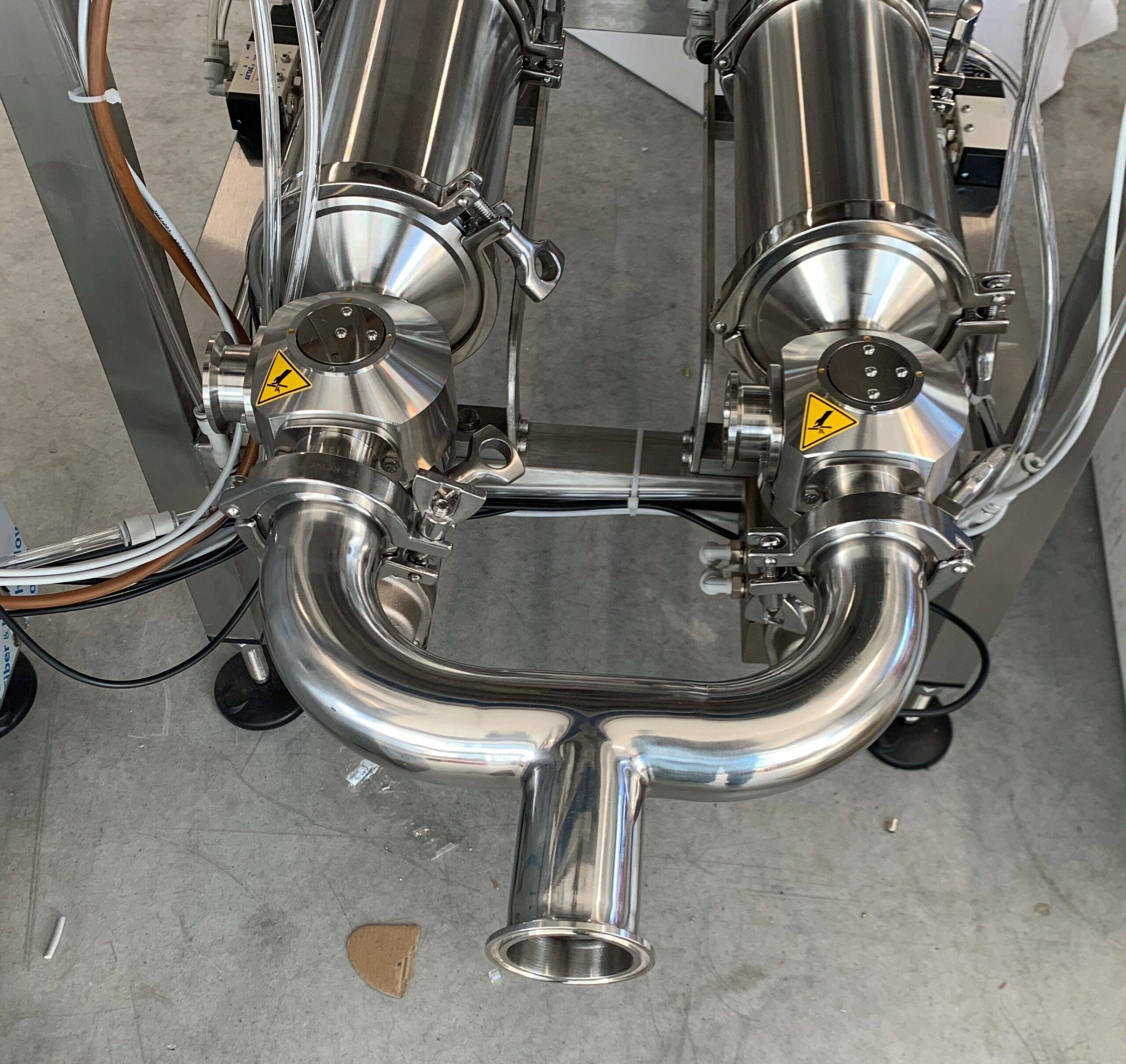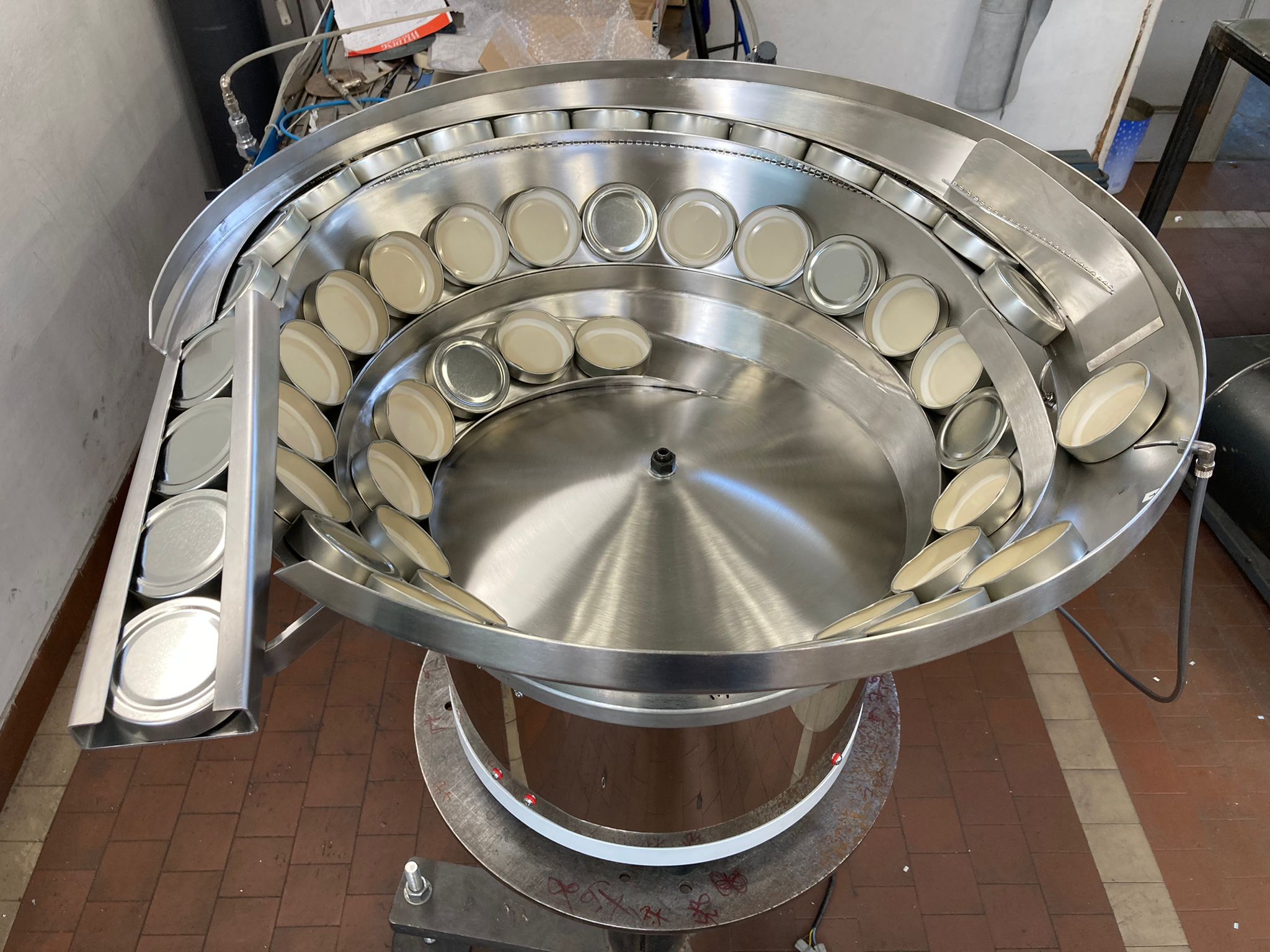The plant is designed to handle the entire packaging cycle of hot-filled food creams in glass containers with twist-off caps and includes the addition of both a metal detector station and a labelling station with a guarantee seal and expiry lot.
A complete line capable of automating the entire packaging cycle and achieving an hourly output of 1,500 jars per hour.
In a first step, the product to be treated, which is particularly corrosive, was considered, and it was decided to equip the plant with a vertical dosing unit with a PMMA cylinder and piston with an HDPE head for the dosing part and a powder-coated coating for the internal structure of the monoblock.

Full line image
To allow for the insertion of the metal detector, the dosing station has been separated from the capping station and consists of two pneumatically operated volumetric pumps made of stainless steel with special seals to handle the passage of the product at temperature
The product is drawn directly from the product preparation tank with a single discharge point, which is why a 316 stainless steel manifold is provided to join the two dosing pumps that are positioned at the beginning of the line under the rotating container loading table.

Image stainless steel manifold dosing unit
The metal detector is equipped with an automatic rejection system for jars found to be unsuitable and conveys them to the capping unit’s infeed belt.
The latter is equipped with a vibrating orientator with a Ø 700 tank with spot welded track and scotch-brite finish, a cap transport belt with suction cup pick&place and a pneumatic descending head capper with customised spindle for twist-off caps.

Image Ø 700 steel vibrating orientator
At the exit of the last monoblock, the labelling station with a thermal transfer marker for printing the expiry lot on the edge of the metal cap completes the line.
The plant has a linear footprint of 8 metres and is specially designed to handle different sizes of glass containers with twist-off caps from 200 g up to 500 g, reaching a production speed of up to 1,500 units per hour.
